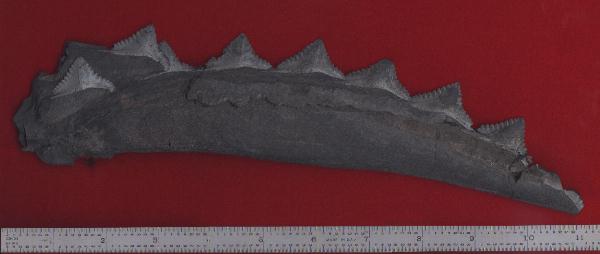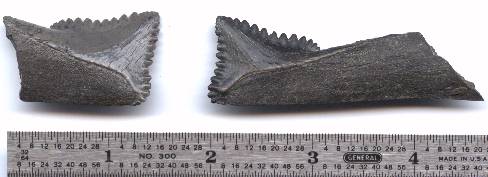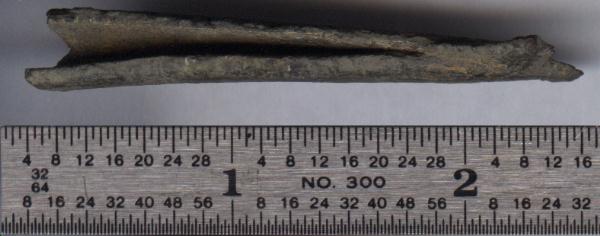| Edestus heinrichi | xxxxxxxxxxxx | ORDER:
Eugenedontia
Super Family: Edestoidea Family: Edestidae Genus: Edestus Species: heinrichi |

The photo shows a group of 9 teeth from a shark in the genus Edestus. In this genus the tooth bases are enormously enlarged, and up to ten teeth may form in a group. The bases are very tightly attached to each other (probably by connective tissue) but are not fused. ( The front is to the right )
The two left teeth are displaced in this sample, and the very right tooth is broken. This type of shark shed their teeth and grew new ones throughout their life. This grouping is called a symphysical tooth whorl. Most if not all current species of sharks shed their teeth and grow new ones, it is estimated that a Great White shark may shed as many as 2,000 teeth per year.
Approximate Age: 310-312 million years
old.
Location of Discovery: Peabody Coal Co.,
Marissa Mine
Washington County., Illinois

Location of Discovery: Peabody Coal Co., Marissa Mine
Washington County., Illinois

Approximate Age: 310-312 million years
old.
Location of Discovery: Peabody Coal Co.,
Marissa Mine
Washington County., Illinois
